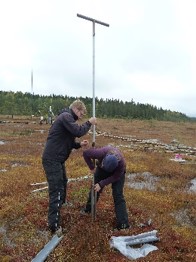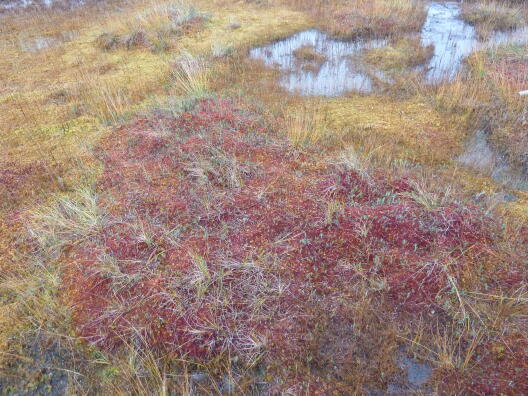SPURT - Peatland resilience from microform patterns
Shifting patterns? Understanding peatland resilience from shifts in small scale microform patterns
Background
Peatlands play a key role in the global carbon cycle. They store large amounts of atmospheric carbon dioxide, but also emit methane, both potent greenhouse gases. However, to date it is uncertain how carbon fluxes will change in response to climate change. Most peatlands exhibit microtopography, creating a pattern of wet and dry microsites (microforms), and each microform has different greenhouse gas fluxes. Thus, a shift in microform distribution may have large
consequences for the peatland carbon budget. An important remaining question is therefore how patterns of microforms develop over time in response to climate change. This project will address this question by investigating paleo-ecological peat records. Shifts between microform types will be identified from macrofossil composition, dated through radiocarbon dating, and related to the timing of past climate changes. The relation between microform shifts,
hydraulic properties, decomposition, and carbon accumulation will be studied in twelve peat cores, capturing spatial variation across the peatland. Microform resilience to climate change will be quantified using a novel method comparing the timing of shifts in microforms and peat moisture indicators with changes in precipitation balance reconstructed from isotopic signatures of plant biomarkers. The results of this study will clarify the controls on long-term microform
dynamics, increasing the accuracy of predictions of peatland carbon budgets under a changing climate.
Main research questions
- Do microforms react to climate change or are they resilient? Are there differences between microform types?
- How do changes in microform type over time affect long term carbon accumulation and decomposition?
- Can the microform resilience to climate change be quantified using plant lipid δD as proxy for climate change?
Main methods
- Sampling peat cores from patterned bog "Siikaneva", southern Finland.
- Reconstructing microform shifts from plant macrofossil remains.
- Analysis of organic matter accumulation and decomposition (C, N, 13C, FTIR).
- Reconstruction of past atmospheric humidity conditions using vascular plant and peatmoss δD signatures.
Project partners
University of Münster
Institute for Landscape Ecology, Ecohydrology and Biogeochemistry Group
Principal Investigator: Dr. Paul Mathijssen
Co-Investigator: Prof. Dr. Klaus-Holger Knorr
University of Eastern Finland
School of Forest Science, Peatland and Soil Ecology Group
Co-Investigator: Prof. Eeva-Stiina Tuittila
University of Zurich
Department of Geography, Soil Science and Biogeochemistry
Co-Investigator: PD Dr. Guido Wiesenberg
Student research project or thesis opportunity
Students who are interested in being part of this research, either as a research project or BSc. / MSc. thesis, are welcome to contact us. Research tasks could be fieldwork (Finland), labwork, or microscoping, or a combination of these.
Requirements:
- Interest in long term development of ecosystems
- Some experience identifying plant species and/or biogeochemical analysis
When:
Flexible (project runs until 2022); Fieldwork will start in October 2019. Working on this project as part of an Erasmus exchange to Finland is possible.
Contact: Dr. Paul Mathijssen






